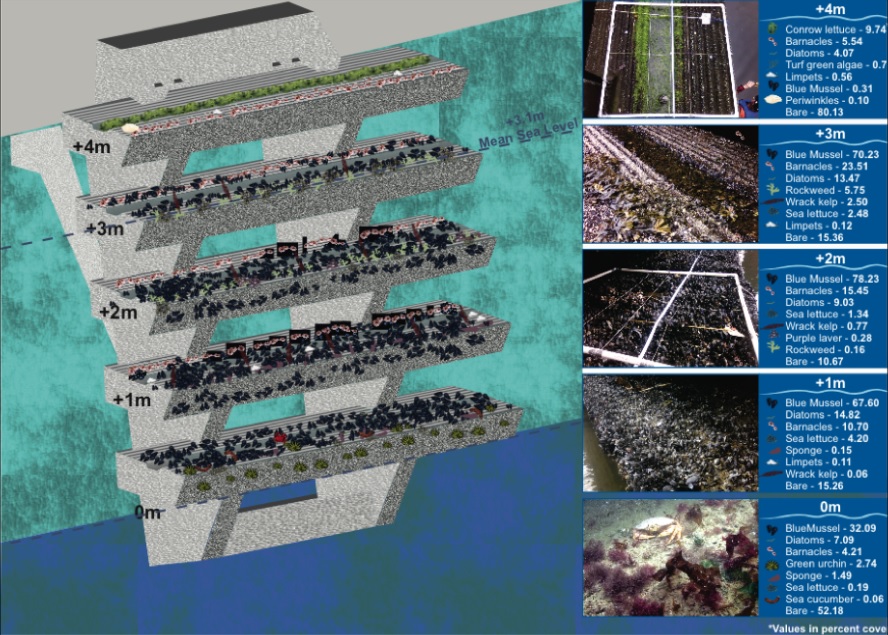You might be wondering: so what’s down there, exactly?
Fisheries and Oceans Canada (DFO) wanted to know too. As part of its obligation to the habitat compensation requirement, Tetra Tech EBA continued to monitor the marine habitat feature for five years after its installation. Sampling of the habitat skirt’s intertidal and subtidal zones were undertaken and compared to a nearby reference site that DFO deemed as an acceptable marine habitat condition.They examined the habitat, fish, mobile, sessile, and benthic invertebrates, macroalgae, substrate, colonisation, and succession of the skirt.
In general, the species richness and diversity at the habitat skirt have generally increased since its installation. During the 2012 surveys, the habitat skirt exhibited the expected zoning patterns, and viable and diverse marine communities appeared to be well-established.

Depiction of the Vancouver Convention Centre habitat skirt and the percent coverage by various organisms (Tetra Tech EBA 2012).
Compared to the reference site, the habitat skirt exhibited similar organism diversity and richness. Some of the organisms seen on the habitat skirt included: sea lettuce, rockweed, purple laver, brown kelps, and a number of red algae species were found. Sessile invertebrates, mostly Pacific blue mussels, anemones and sponges were also seen on the habitat skirt. As hoped, large schools of salmon have been observed interacting with the habitat skirt.
Tetra Tech EBA concluded that the habitat skirt supports a diverse and plentiful ecosystem and is functioning as expected. The colonisation by various invertebrate and algal species provides food and shelter to predatory species, including sea stars, crabs, and sea urchins. Many fish species, such as salmon, lingcod, and rockfish have also been observed interacting with the habitat skirt. Overall, the habitat skirt appears to be providing appropriate ecosystem services.
